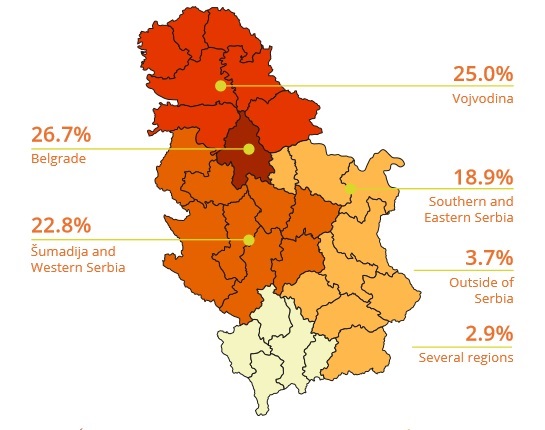Over the next few months, we’re going to be rolling out reports covering philanthropy in the region. This post is going to be dedicated to our most recently released report on Serbia’s philanthropy scene.
The work we do is centered on collecting data on philanthropic instances in the region, and our annual reports provide a significant resource into understanding who gives, to whom do they give, and how do they give.
Now, without further ado, let the data crunching and analysis begin!
We gathered over 3,000 unique philanthropic entries related to voluntary giving from various donors and this blog will give you a snapshot of what those instances were about.
As we already mentioned in our Catalyst Conversation post:
2015 Annual Report on the State of Philanthropy in Serbia. The report gives a review of the trends found between 2014 and 2015, and indicates positive trends in philanthropy development in the country. This is evident in increased giving for public goods, in the amount of donations, in the number of actions, in the number of partnerships between the corporate and civil society sector and in giving for long-term strategic programs. (For an overview of the research findings, please see Catalyst’s infographic and quick facts sheet on philanthropy in Serbia for 2015.)
Overall there are three important trends to highlight from the report. The first is that a whopping 22 million EUR went to various philanthropic purposes from 2014-2015! Of that 22 million, the donations came from 268 philanthropic instances per month in 2015. In comparison, there were only 154 instances in 2014. Third, citizens gave an average of 3.14 EUR in 2015 as opposed to 2.59 EUR in 2014.
Breaking down the data a bit more into who was donating, we observed that mass individual giving (i.e., when a large number of individuals give that names and they could not be identified, like in a funding campaign or something of the like) is still the predominant group donating. This amounted to 41.7% of recorded instances. The Corporate Sector came in second with 26.8% and third were individuals with 19.3% of recorded instances.
However, as we note in our report, the amount donated is a bit different. Of the 22 million given, the Corporate Sector gave 51.6%, individuals gave 16.4% and mass individual giving amounted to 15.2% of the total amount.
The final aspect of the report I’d like to bring your attention to is the areas or themes of the donation. The four most popular (drawing 78.1% of the total instances of donations) were healthcare with 32.6%, support to marginalized groups with 24.3%, poverty reduction with 13.6%, and education with 7.6% of philanthropic instances. It should be noted that while marginalized groups have remained on the same level of instances, there has been a drop in healthcare and poverty reduction while there has been an increase in the instances toward education.
I encourage you to check out the report itself, which has a more in-depth look into the philanthropic landscape in Serbia. But overall, the research lends to evidence that philanthropy is not only present but that it’s gaining steam in Serbia.
Again, we’ll be rolling out more reports in the coming months discussing the philanthropic landscape in other countries in the Balkans, so keep an eye out on our website and of course on the blog as we continue to share stories and research about philanthropy in the region.
As always, if you have stories of philanthropy you want to share, don’t hesitate to email me or leave a comment!


Leave a comment